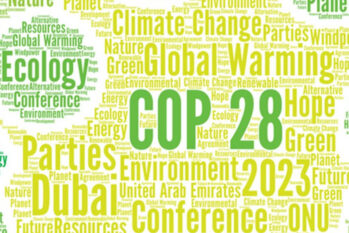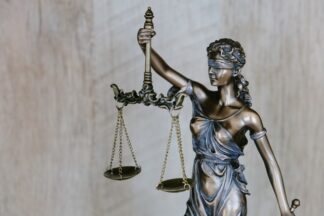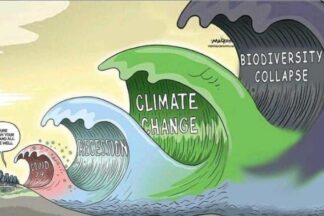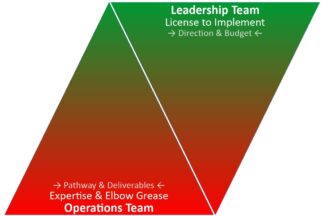The healthcare industry's social responsibility goes beyond just workplace and supply chain issues; it's about its impact on society and what its real goals are. Trials and prevention efforts often overlook certain groups. Politics and money regularly determine who gets treated, in function of political agendas in some jurisdictions. And: Using the GDP to measure health isn't necessarily helpful as it incentives fixing problems rather then preventing them early on.

COP28 yielded mixed results, featuring some historic 'firsts' such as a fossil fuel phase-out commitment, a $700 million loss and damage fund, the recognition of nuclear energy, and (this is huge!) a pointed spotlight on food systems' role in adaption.
Most of the old challenges though remain: It's all carrots and no sticks. Which shows in the continued absence of enforcement of Climate Targets or their stringency, and the eye-level conversation with Global South nations.
Governments as well as legal persons such as companies are undoubtedly important players in this whole societal shift towards climate mitigation and adaption. When it comes to corporates though, and notably stock quoted companies, there is a group of people that is most prominently exposed in regards to the legality and societal ‘license to operate’ of a company: the Board of Directors (BoD). The question hence for this blog post is: How is this climate litigation business shaping up to affect the Board of Directors of publicly listed companies?
After some results at the COP in Vancouver, as well as the release of the first ever Science -Based Targets for Nature (SBTN) – finally (!) the recommendations by the TNFD (Task Force for nature-based financial disclosure) have been released. So the question obviously is, how do these targets address the 5 key drivers of biodiversity erosion eventhough it is only about reporting? Are the TNDF recommendations worth their salt?
Governments are undoubtedly important players in this whole societal shift towards climate mitigation and adaption. Equally important though, and by the argument of some possibly even more important: companies, the corporate world.
The largest number of cases on a global level are brought forward against governments. But about a forth of all cases are filed against corporations. This is not negligible - and, maybe more importantly, a number on a brisk raising trajectory.
The question hence for this blog post is: How is this climate litigation business shaping up to affect corporate players?
Litigation, going to court, is by definition not a fun business. And yet, in this 2023 several Climate Litigation cases have already caught the headline – and many more are in the makes.
Among all the court cases, one particular case sticks out like – depending on the political viewpoint – either a lighthouse of hope, or a sore thumb: Urgenda vs Government of the Netherlands.
In this blog post we dig deeper into this case:
Who was going to court against whom? And why exactly? How come the plaintiffs won? And: is this just a one off local phenomenon in the Netherlands?
After some results at the COP in Vancouver, as well as efforts by the TNFD (Task Force for nature-based financial disclosure) – we finally (!) got the first ever Science -Based Targets for Nature (SBTN).
It is a first release, however. So the question obviously is, how do these targets address the 5 key drivers of biodiversity erosion? Are the SBTNs worth their salt?
More and more people call themselves 'sustainability experts'. Just -we do not need more of them. Instead we need people who are extremely good at what they do, apply their skill in a context to create change and that nourishes them for years to come. That's the Sweet Spot.
How did you find your 'Sweet Spot'? And how did you transition?
This manual was originally drafted when I was astonished by the way how ‘doublespeak’ is being used in organisations to prevent change. Any change. Including – but not limited to – sustainability related ones.
It is a cynic-sarcastic-semi-realistic manual on how to be reasonably successful in disempowering an organisation. It is applicable to all areas that encompass change including innovation, sustainability, internationalisation, digitalisation and so forth.
In the last post I wrote about one of the most historic inter-governmental landmark decisions: At the ‘Biodiversity’ COP (COP15) 200 countries had agreed on 4 Goals and 23 Targets.
It goes without saying though that the interesting piece is the enforcement and implementation mechanisms of the mentioned agreement.
Hence, the focus of this article is: How exactly – if at all – will the goals and progress measures reached in December 2022 be enforced and tracked?
In time for Christmas, one of the most historic inter-governmental landmark decisions hit the headlines: The 'Biodiversity' COP (COP15) had actually achieved 'something'. 200 countries had agreed on 4 Goals and 23 Targets. Some of those are a bit more concrete than others, the headline goes roughly like this: “By 2030: Protect 30% of Earth’s lands, oceans, coastal areas, inland waters; Reduce by $500 billion annual harmful government subsidies; Cut food waste in half.” A closer look at precisely those 23 Targets and the specificity of the measures they contain.
It’s that time of the year again when plans and aspirations are big, time capacity is scarce, budgets already set – and the old routine is just about to take over again.
It is also the time of the year where there is that untypical window of opportunity. THE window of opportunity one could argue: introduce a small change. Small enough not to be overly tough to uphold. But big enough that, if repeated times and over again, at the very least 365 times a year, starts to make a difference.
The journey starts with the first step. Here a few ideas.
When it comes to governance, discussions about ‘Best Practice’ are frequent. What is often forgotten however: Governance, and notably ‘good’ governance, stands and falls with people. WHO sits on the board is hence at the very least as important as HOW that board is set up to operate by its procedures and surrounding legal constraints. Why is that so? And why is this often ignored?
‘The conversation is always about cost, not about impact!’ And: ‘Employees just don’t get moving!’
Do these statements remind you of your company’s challenges? Your not alone!
Leadership and Operations Teams have complementary sustainability implementation accountabilities and responsibilities. But instead of leveraging that fact, more often than not the blame game is played.
What to do about it?
Implement Fair Process Leadership governance processes - and train all teams through Serious Games.
This time around I want to make it explicit: If a company is not performing in sustainability terms, it as good as always down to senior leadership. Both, executive leadership – CEO, COO, CFO, CMO,
CSO etc. - as well as non-executive leadership at board level.
For one, arguably simplistic, reason: sustainability deliverables are oversteered by
‘higher priority’ KPIs. And what does mean? Fundamentally, it is down to decisions where the ball stops at the top leadership level.
Do you recognise these scenarios?











